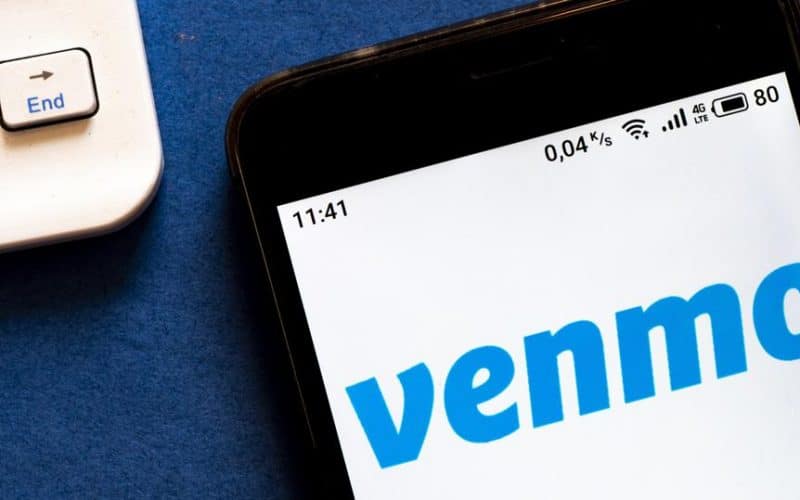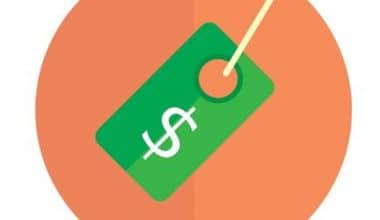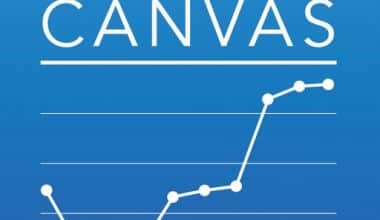Do you want to know how Venmo makes money? Using the official Venmo app, individuals may send money to one another, and merchants can accept payments.
Users of Venmo can send money to one another or use the service to pay at participating businesses via a specialized debit card or the “Pay with Venmo” function. This piece examines how the company makes money from its service offerings.
What Does Venmo Do?
When sending or receiving money online, the Venmo app links to users’ checking accounts and debit or credit card facilities, allowing them to complete payment requests.
A Venmo user can request “charges” from friends in their network by adding them to their app, similar to how Facebook users can make “friends.”
After sending the payment request, the recipient can accept or decline it using their mobile device’s app. After receiving the funds, the recipient can transfer them to their specified bank account or associated card, or they can keep them in their platform e-wallet.
Users can also include short notes to the recipient in their payment requests. Venmo also provides an API via which businesses can link their payment services.
How Does Venmo Work?
Venmo is a mobile payment network that allows users to transfer money between authorized parties and pay for goods and services purchased through merchant partners. The app also includes a valuable bill-splitting feature, allowing you to share a restaurant bill.
Both parties must have the Venmo app and be registered in each other’s networks to transfer funds. The software looks similar to Facebook Messenger and allows users to chat with one another, as well as utilize emoticons.
It should be noted, however, that the service is only available to US people with US bank accounts. Businesses can also join Venmo and receive app payments for goods and services.
To qualify, merchants must modify their PayPal Checkout settings to include Venmo as an additional payment provider. Uber, Grubhub, Lulumon, and Poshmark are among Venmo’s merchant partners.
Venmo also provides customers with a debit card linked to their app. Users can use their Venmo balance to pay for groceries or items and services with the card, just like a conventional debit card.
Users can also receive paychecks through connected accounts and earn rewards from partner businesses.
How Does Venmo Make Money?
Venmo enables users to send and receive money, but how does the app stay operational? Many individuals question how Venmo makes money by allowing users to utilize their services. Are there any expenses associated with withdrawing money? Venmo makes money in various ways, which we’ll go over below.
#1. Pay With Venmo
Pay with Venmo is a function offered to all app users. It allows a user to buy something from a particular seller. So, if you want to buy something from a retailer that accepts Venmo, like Urban Outfitters or Foot Locker, you can pay using Venmo.
This is especially useful if the user does not want to use their credit card information to pay for items on the website. Then, when the buyer pays with Venmo, a small fee is added to the order total. Merchants must pay 2.9% plus $0.30 per transaction. Businesses will gladly pay that tax because it is in their best interests. They will attract more customers by paying the charge and accepting Venmo payments, which will still benefit them.
Furthermore, many contemporary apps do not interact with traditional banks. This implies that you may be unable to access your bank account on some websites. In this instance, Venmo is an excellent choice. With this in mind, it makes it easy to see how Venmo may generate money.
#2. Instant Transfers
Are you tired of transferring money from an e-wallet and then having to wait several days for that money to appear in your bank account? You can say goodbye to such days if you utilize Venmo, which enables quick transfers. This was first announced in 2019. Previously, transferring money to your bank would take 1-3 days, depending on the circumstances.
When you transfer money, you will be charged a 1% fee based on the amount you send. There is a $0.25 minimum cost and a $10 maximum fee. The transfer takes no more than 30 minutes. With so many people needing money as quickly as possible, consumers are likely to adopt this form of fast transfer, which gives Venmo a cut.
#3. Exchange and Withdrawal Fees
In 2018, Venmo began issuing debit cards to users. As a result, everybody who establishes an account on the platform will be issued a debit card. You can use this to go out with your pals and pay for beverages, supper, or other stuff. When you’re with your buddies, you can divide the bill, making the Venmo app even more convenient.
Venmo can earn money thanks to the Mastercard-branded card. In essence, the platform collects interchange fees from merchants. The fees are then shared between Venmo and Mastercard, each receiving a portion.
You can also get cash, but you will be charged a small fee. ATM Domestic Withdrawal Fees, for example, will be $2.50, while Over-the-Counter Withdrawal Fees will be $3.00.
#4. Cash a Check
Cash a Check is a new sort of service, having only been introduced in January 2021. The site made this service available so users could cash their wages and the government’s stimulus cheques. However, there are a few prerequisites that must be met.
You must have a valid email address and a Venmo Debit Card or Direct Deposit. You must photograph the check to deposit it into your account. Venmo will first review it. If everything checks out, the money will be put into your account.
Venmo will charge 1% for this service. Also, remember that you must cash in at least $5.
#5. Cashback Scheme
If you have a Venmo card, you will be able to receive cashback incentives from a variety of retailers, including Papa Johns’s, Dunkin’ Donuts, Chevron, and others. Cashback programs will return a portion of the purchase price to your account. As a result, you may be more likely to make purchases from these businesses.
So, the partner, or merchant who provides you with the cashback, will pay Venmo a commission for referring the consumer. Venmo can profit from this service as well.
#6. Cash Interest
Finally, cash interest is another way for Venmo to make money. Venmo can use the funds in its accounts to lend to various institutions. For example, this may be a bank.
They then receive interest from the bank. According to Statista, every bank in the United States had a net interest margin of up to 3.35% in 2019.
What Makes Venmo’s Business Model?
As of 2021, Venmo had approximately 65 million active accounts. Venmo’s customer base is divided into two categories. It charges various interchange and withdrawal fees, cash interest, check cashing fees, and affiliate revenues on its cashback program.
The first type of user is people like you and me looking for a simple way to transfer money via mobile or divide bills with friends. Venmo refers to it as a personal profile. Venmo claims to be more than a payment service since you can express yourself in each payment by sharing an inside joke, adding emojis and animated stickers, or simply keeping it simple. It is all up to you.
A business user is the second sort of user. Venmo refers to it as a business profile. A user can switch between personal and business profiles and track business transactions independently from personal transactions. A company profile enables users to manage their finances and gain client insights to better plan and market. Businesses can also utilize Venmo for contactless payments by scanning a QR code.
Read Also: HOW DOES PAYPAL MAKE MONEY: Business Models & History
The accompanying Statista graphic highlights Venmo’s explosive rise in recent years, as young Americans, in particular, love the ease of splitting bills or sending money to friends with the tap of a finger. Venmo processed $60 billion in payments in the three months ending September 30, up from less than $5 billion five years ago.
Venmo offers an advantage over competitors such as Google Pay, Apple Pay, and Zelle. The company is well-known among millennials not just for its payment solutions but also for its split bill capabilities. According to emarketer, Venmo will have 57.5% of P2P payment users in the United States in 2021, followed by Zelle (35.6%) and Square’s Cash App (30.8%).
When a user makes a transaction on Venmo, the transaction details (without the payment amount) are broadcast on the user’s news feed and to the user’s network of friends and contacts, much like a social media feed. Venmo argues that the social experience is one of the app’s main draws, although users can opt-out.
What are the Risks of Using Venmo?
Risks are inherent in internet-connected apps, particularly those involved in financial transactions. So, whether we’re talking about Venmo, PayPal, Revolut, or other similar apps, consumers should consider all the hazards.
The primary source is hackers. In principle, someone with malicious intentions and the necessary skillset might evade Venmo’s safeguards.
If someone acquired access to the app, they might move funds to another bank account and change its email address. As a result, the user would never receive transaction notifications informing them that something was incorrect.
Fortunately, a few straightforward measures can assist you in avoiding this horrible scenario. Begin by restricting the amount of money you keep on Venmo and using it solely with trusted friends and family. A strong PIN/touch ID and switching your account to “private” will assist.
If that isn’t reason enough to limit the amount of cash in your Venmo account, remember that, unlike traditional U.S. banks, Venmo is not insured by the Federal Deposit Insurance Corporation (FDIC). That implies there’s a chance you won’t receive your money back if the company goes bankrupt or otherwise loses your money.
How To Reduce Venmo Fees
Finally, reducing the amount of pay-for-Venmo products you use is the most effective strategy to lower your Venmo spending.
You can avoid spending money by not using a credit card, cashing checks the old-fashioned way, ignoring the instant transfer option, and only withdrawing cash from ATMs on the MoneyPass network.
It becomes more problematic if you own a company or have a side business that accepts Venmo payments. However, because the fees are unavoidable, switching to cash-only transactions or cheaper electronic alternatives is the only choice.
Venmo and Banking in the Future
Venmo made a wise decision by entering the direct payment industry. Cash App and Zelle are two more significant players.
Square owns the cash app.
Zelle has made an immediate impact. Their approach is a little different. They intend to include banks and credit unions in their app.
It allows you to instantly transmit direct payments without requiring the other user to have the same bank as you.
Zelle claims that they are safer than the others.
Only time will tell.
Is there going to be more? Without a doubt.
Will Venmo, Cash App, and Zelle be used to exchange digital currencies such as Bitcoin and Ethereum for goods and services?
It’s conceivable.
What Venmo and Cash App are doing, I believe, is a method to avoid banks.
There will be no need to visit a physical (or even online) bank to open a checking account.
You will soon be able to send and receive money directly from your app.
Consider adding a debit card that can be used immediately from your cash balance.
Why would you need a bank if you can do the same thing digitally?
Only time will tell.
What Is The Future Growth of Venmo?
PayPal, Venmo’s parent firm, promised that it would continue to improve the company’s ties with shops.
Other large retailers, such as Bed, Bath & Beyond, and Nike, are expected to join the company’s partner network, allowing for the processing of QR payments.
The company is still growing, but there is no word on whether it plans to take the Venmo concept abroad.
Who are Venmo’s Competitors?
The following are some of the e-wallet services that compete with Venmo for market share.
- GooglePay: Google Pay, Venmo’s closest e-wallet competitor, allows users to connect their bank account and credit or debit card to the site. However, Google Pay has an advantage because it is available globally.
- Apple Pay: Apple Pay is becoming increasingly popular in the United States and Canada. It, like Google Pay, is available globally, with considerable market development in countries like the United Kingdom and Australia. Apple Pay is available for all iOS-based devices and uses the device’s fingerprint reader to verify the user’s identification for the transaction.
- Zelle: Zelle is a cash payment app that has several features with Venmo. The payment app, however, is owned and managed by a collection of US-based banking institutions.
- Cash App: Jack Dorsey founded app for Cash Square, the inventor of Twitter, to serve as a payment alternative to PayPal. Its “Cash App” technology is used for free debit card transactions via the company’s mobile app.
Conclusion
While tens of millions of Americans use Venmo today, we’re guessing that just a few can answer the question, “How does Venmo make money?” You are now among the knowledgeable few.
Not only that, but by remembering the tips in this post, we hope you’ll be able to utilize the app more cost-effectively, allowing you to keep more of your own money.
Related Articles
- HOW DO YOU USE VENMO: What It Is and How to Use It
- How To Add Money To Venmo: Best Easy Guide (Updated)
- Venmo Account Frozen: Best 2023 Stress-free Solutions (Why is Venmo Freezing?
- How to Send Money Online Instantly in 2023(+ Top 10 money transfer apps )
- HOW DOES PAYPAL MAKE MONEY: Business Models & History






